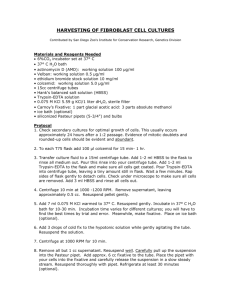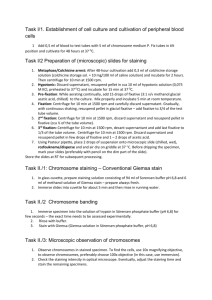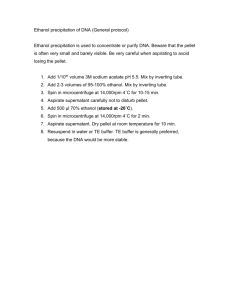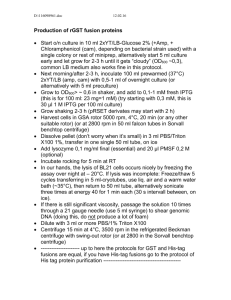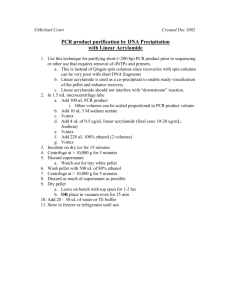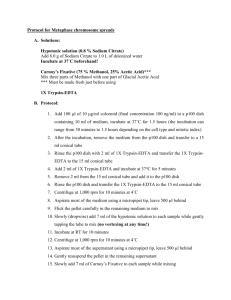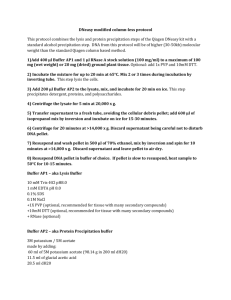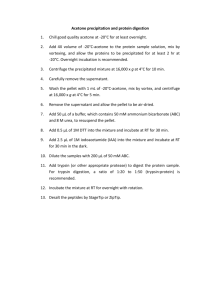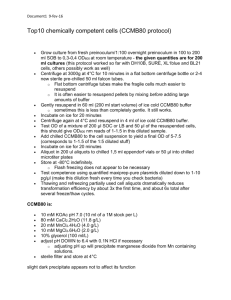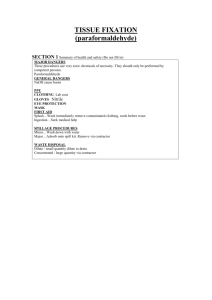WORD - Farmachrom
advertisement
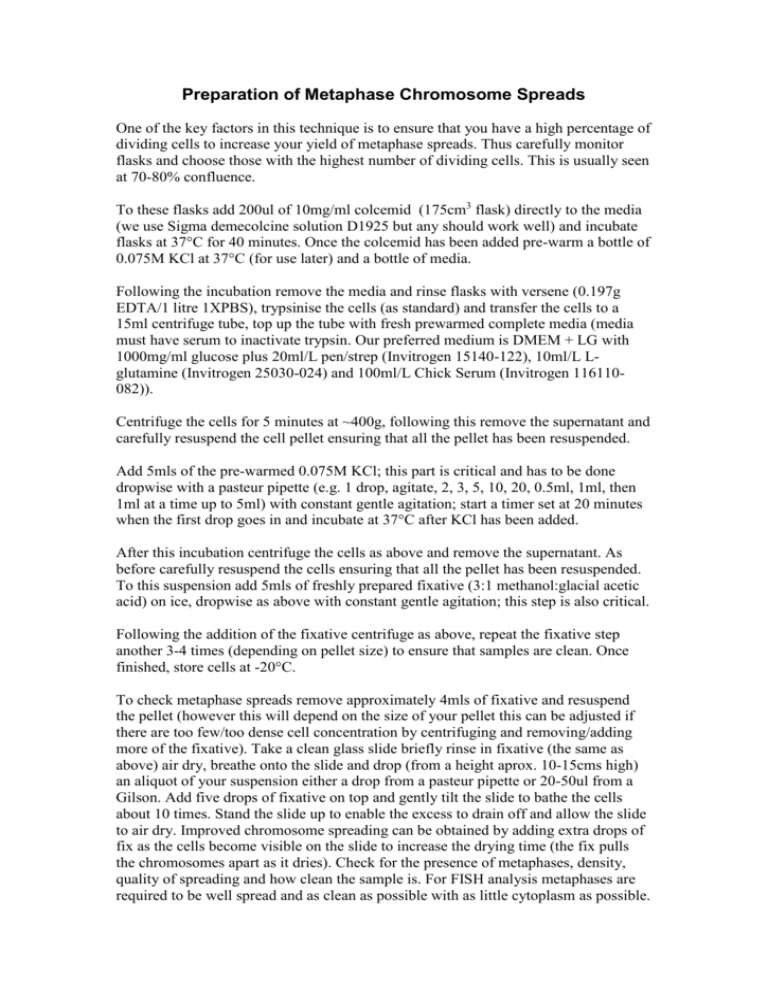
Preparation of Metaphase Chromosome Spreads One of the key factors in this technique is to ensure that you have a high percentage of dividing cells to increase your yield of metaphase spreads. Thus carefully monitor flasks and choose those with the highest number of dividing cells. This is usually seen at 70-80% confluence. To these flasks add 200ul of 10mg/ml colcemid (175cm3 flask) directly to the media (we use Sigma demecolcine solution D1925 but any should work well) and incubate flasks at 37°C for 40 minutes. Once the colcemid has been added pre-warm a bottle of 0.075M KCl at 37°C (for use later) and a bottle of media. Following the incubation remove the media and rinse flasks with versene (0.197g EDTA/1 litre 1XPBS), trypsinise the cells (as standard) and transfer the cells to a 15ml centrifuge tube, top up the tube with fresh prewarmed complete media (media must have serum to inactivate trypsin. Our preferred medium is DMEM + LG with 1000mg/ml glucose plus 20ml/L pen/strep (Invitrogen 15140-122), 10ml/L Lglutamine (Invitrogen 25030-024) and 100ml/L Chick Serum (Invitrogen 116110082)). Centrifuge the cells for 5 minutes at ~400g, following this remove the supernatant and carefully resuspend the cell pellet ensuring that all the pellet has been resuspended. Add 5mls of the pre-warmed 0.075M KCl; this part is critical and has to be done dropwise with a pasteur pipette (e.g. 1 drop, agitate, 2, 3, 5, 10, 20, 0.5ml, 1ml, then 1ml at a time up to 5ml) with constant gentle agitation; start a timer set at 20 minutes when the first drop goes in and incubate at 37°C after KCl has been added. After this incubation centrifuge the cells as above and remove the supernatant. As before carefully resuspend the cells ensuring that all the pellet has been resuspended. To this suspension add 5mls of freshly prepared fixative (3:1 methanol:glacial acetic acid) on ice, dropwise as above with constant gentle agitation; this step is also critical. Following the addition of the fixative centrifuge as above, repeat the fixative step another 3-4 times (depending on pellet size) to ensure that samples are clean. Once finished, store cells at -20°C. To check metaphase spreads remove approximately 4mls of fixative and resuspend the pellet (however this will depend on the size of your pellet this can be adjusted if there are too few/too dense cell concentration by centrifuging and removing/adding more of the fixative). Take a clean glass slide briefly rinse in fixative (the same as above) air dry, breathe onto the slide and drop (from a height aprox. 10-15cms high) an aliquot of your suspension either a drop from a pasteur pipette or 20-50ul from a Gilson. Add five drops of fixative on top and gently tilt the slide to bathe the cells about 10 times. Stand the slide up to enable the excess to drain off and allow the slide to air dry. Improved chromosome spreading can be obtained by adding extra drops of fix as the cells become visible on the slide to increase the drying time (the fix pulls the chromosomes apart as it dries). Check for the presence of metaphases, density, quality of spreading and how clean the sample is. For FISH analysis metaphases are required to be well spread and as clean as possible with as little cytoplasm as possible. Cytoplasmic slides can be treated with pepsin directly after slides have been examined. Dehydrate slides in 100% RT EtOH for 5 mins, then put into pepsin solution. In a coplin jar this is 50ml 10mM HCl + 125ul 1% pepsin (make up fresh each time, store pepsin stock solution in freezer). Leave in pepsin for 1-2 mins depending on amount of cytoplasm. Rinse slides in 2xSSC, then incubate in 2xSSC RT 2 mins. Rinse in ddH2O and put through an EtOH series (70, 80, 100%) for 5 mins each. Slides can then be aged.

